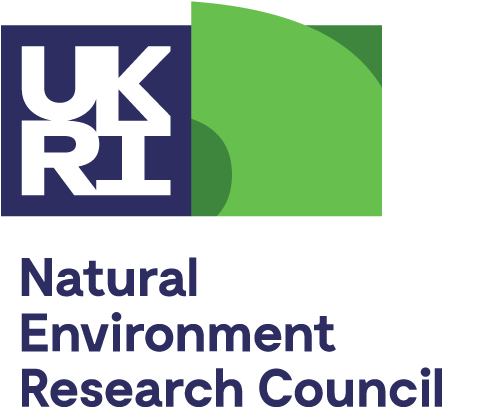This information is only applicable to the Pushing the Frontiers funding opportunity closing on 21 January 2026.
NERC implemented organisational demand management measures in 2015 designed to raise discovery science standard grant success rates.
The objective was to reduce the number of applications from research organisations for NERC’s discovery science standard grant scheme and to ensure research excellence, efficiency and value for money for the taxpayer.
As the standard grant scheme has since been superseded, demand management measures are now applied to the Pushing the Frontiers scheme only, using the same approach.
The demand management measures are based on historic application and award data and limit the number of applications an individual research organisation can make, where that organisation fails to meet a 20% success rate quality threshold.
Research organisations that fail to meet the 20% success rate threshold will have the number of applications they can make in each pushing the frontiers round restricted, until they meet the threshold. The data is re-calculated annually using the six most recent grant rounds.
Restrictions are calculated on a sliding scale, with the lowest cap being one application per grant round.
Pushing the frontiers demand management measures 2025
Organisations are reminded that all applications count towards an organisation’s quota, where that organisation is applying as the grant-holding organisation. Organisations should ensure they have a process in place to control all submissions to NERC.
Note on submissions: February 2025
Recent rounds of Pushing the Frontiers have seen record numbers of submissions, with July 2024 and January 2025 closing dates each receiving over 20% more submissions than the average over the previous nine rounds.
Our collective goal is to preserve the excellence and fairness of the research funding ecosystem.
The high volume of applications has created substantial challenges in maintaining the integrity of our peer review process and ensuring meaningful success rates. Recognising these pressures, we will be exploring strategic adaptations to our funding cycle and assessment processes to manage application volumes effectively.
By working together to manage application volumes and maintain rigorous standards, we can ensure that the most promising and impactful research receives the support it deserves.
As part of a UKRI harmonised approach to ensure greater transparency in the peer review process, panel recommendations and funding cut-off points are also published on the NERC website and give an indicator of the performance of individual applications. Please note that full panel outcome data cannot be published until awards have been formally issued, which may result in a delay in publication.
Contact for further information
Research grants team
Email: researchgrants@nerc.ukri.org
Success rate methodology
The calculation for the 20% success rate quality threshold will be based on data from six grant rounds only.
The measures only apply to NERC pushing the frontiers scheme.
Where a research organisation submits more applications to any round than allowed under the cap, NERC will office-reject, meaning not assess, any excess applications. If any applications are subsequently rejected based on rule adherence or remit, a research organisation cannot submit alternative applications.
The data used in the calculation will exclude applications that are ‘office rejected’ or ‘withdrawn by research organisation’. Where an application is considered outside the NERC remit and redirected to another research council under the cross council remit agreement it will be ‘withdrawn by the research organisation’ on the NERC system and not count in calculations towards the quota.
Where necessary, NERC uses random allocation to allocate funding between equally scored applications in the Pushing the Frontiers scheme. The data used in the demand management calculation will exclude applications scoring 9 or above that are rejected via a random allocation process.
The sliding scale cap for research organisations with a success rate below 20% will be calculated in the following way:
- Take the number of grants awarded over six rounds, calculate the number of applications that would have to have been submitted to give research organisations a success rate of 20% (number of awarded grants multiplied by five). This is the ‘six round 20% application number’.
- Limit the number of allowable submissions to the ‘six round 20% application number’. Apply the cap on a per round basis – that is, divide the six round 20% application number by six.
- The ‘six round 20% number’ will be recalculated annually.
Data used to determine the quota
| Quota year | Closing dates | Quota announced | Six round data used, including Pushing the Frontiers |
|---|---|---|---|
| 2025 | July 2025, January 2026 | March 2025 | July 2021, January 2022, July 2022, January 2023, July 2023, January 2024 |
Frequently asked questions
How can multi-organisational collaborative applications be submitted?
Multi-organisational collaborative applications can be submitted as a single grant application via the UKRI Funding Service. The project leads and project co-leads are named on the same grant application. The project co-leads may be from multiple organisations. If successful, the submitting organisation X would be responsible for transferring funds to the organisations (Y and Z) of the co-leads.
The application counts as one application (and award, if successful) for organisation X only.
I am an eligible project co-lead unable to submit an application due to the cap on my organisation. Do I have to be a project partner or subcontractor to be involved in a collaborative application?
No, as an eligible project co-lead from an eligible organisation, you can be named as the project co-lead on the submitting application and have your costs requested under the normal full economic costing (FEC) categories. Project partners are people and organisations not eligible in their own right for NERC funding and predominantly contributing in cash or kind to projects (not requesting funding). Subcontracts should only be used where the organisation is not directly eligible for NERC funding.
Is the quota an annual cap or does it apply to each pushing the frontiers grant funding opportunity?
The cap is applicable to each pushing the frontiers grant funding opportunity (two per year). So if you have a cap of five, you can submit up to five applications to each of the closing dates.
How often will the cap be recalculated?
The cap will be recalculated annually (every two rounds).
Is data rounded up or down?
The calculation for the cap is rounded to the nearest whole number, so a calculated cap of 10.3 would be rounded down to 10, whereas a calculated cap of 2.6 would be rounded up to 3.
Does the cap just apply to pushing the frontiers or is it applied to all discovery science schemes?
The measures are only applicable to the pushing the frontiers scheme. Applications to the urgent grant scheme and large grant scheme do not count as a submission under the cap.
What data is used to inform the success rate and cap?
The success rate data and cap are based on the six most recent standard grant scheme, including new investigators, and Pushing the Frontiers funding opportunities. Large grant and urgent grant submissions are not included.
We have specifically chosen to only include data that is directly comparable with the scheme that the demand measure applies to. Other schemes that NERC runs have different parameters and assessment processes.
How does the cap relate to applications submitted through the NERC-NSF Lead Agency Agreement?
Where an application is submitted into the NERC pushing the frontiers closing date then the application will count. If the application is submitted to the US’s National Science Foundation (NSF), it will not count towards the organisation’s cap.
Individual applicants are restricted to the number of applications that they may be involved in. This rule has not changed. For NERC, any applicant to a research grant funding opportunity may submit no more than two applications as an co-lead. Only one of these may be as the project lead. Involvement of a UK investigator in a preliminary application submission to NSF as the lead agency will count as a submission as non-lead principal investigator or co-investigator to the next available NERC Pushing the Frontiers funding opportunity.
What happens to grants or project leads that transfer between organisations?
The application will be included under the data for the initial organisation submitting the application.
Why are you using ‘success rates’ rather than a quality metric, such as score at panel, to calculate the caps?
The calculation is based on the percentage of successful or unsuccessful applications, rather than a quality or grade metric. This is to avoid panels intentionally or unconsciously adopting grade inflation to artificially increase the success rate of individual research organisations.
Why are the research councils not implementing demand management in the same way? Why not apply at an individual researcher level?
It was important for NERC to apply measures at the level most appropriate for our community. NERC Council considered the merits of different approaches; applying measures at an individual, department and the organisational level. NERC demand management measures are being applied at an organisational level because this is where there is the most data available, and because the organisations that we fund have responsibility for managing the applications that are made to NERC.
Will these measures restrict the ability for organisations to retain and recruit staff as individuals are worried that they won’t be able to apply for NERC funding?
The demand management measures are for NERC’s Pushing the Frontiers scheme only. There are other funding schemes that organisations may apply to. There is also the opportunity for staff to apply as a collaborator on an application that has a project lead based in another research organisation and where the funds are requested on the submitting organisation’s application.
The measures have been introduced on a sliding-scale of cap over a short time period (three years) and calculated on an annual basis with the intention of allowing organisations to improve their success rate where institutional demand management measures are put in place.
What if my organisation has never applied to the Pushing the Frontiers or NERC’s discovery science, standard grant opportunities?
Organisations who have not previously submitted to the Pushing the Frontiers or NERC’s discovery science, standard grants opportunity will not be capped in the first year in which they submit. Please contact NERC and confirm your intention to submit an application.


